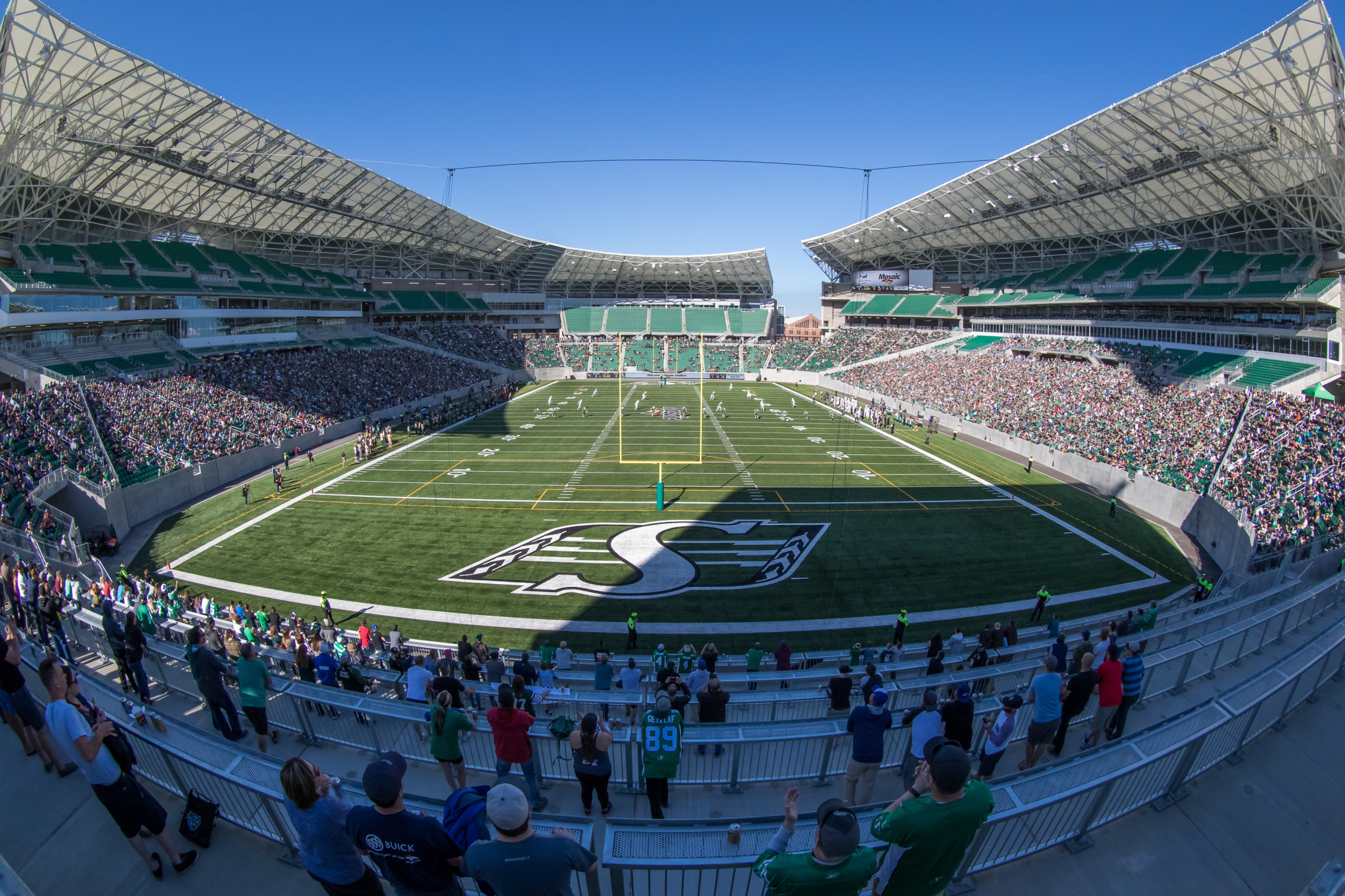
The window in Craig Reynolds’ office gives him a panoramic view of new Mosaic Stadium.
Philosophically speaking, the window also offers the Saskatchewan Roughriders’ president and chief executive officer a look at the past six years — and a glimpse into the future as well.
“You feel a lot of pride when you look out here and you see what a fabulous venue we have,” Reynolds says as he surveys the view from his office in the north end of the new stadium. “Your mind starts to wander to opening day and the energy here.
“You can feel the excitement building when you look out there and the weather’s getting warmer. You can almost see it. I can envision looking at the east grandstand filled with fans. That’s exciting.”
In 2011, Reynolds was the Roughriders’ chief financial officer when the City of Regina announced plans to update the CFL team’s home stadium.
The provincial government eventually got involved and the narrative soon changed: A new stadium would be constructed.
Jim Hopson, the Roughriders’ president-CEO at the time, asked Reynolds to go to the first meeting the city held regarding the stadium — and that get-together convinced Reynolds that the project was going to get off the ground.
“That was probably the first time I thought, ‘This is going to happen,’ ’’ he recalls. “You could tell there was enough momentum. There already were architects and engineers engaged on the concept side and they were asking a lot of questions about optimal size in terms of seating and suites.
“There were detailed-enough questions where I said to myself, ‘We need to get to work here and do some research to make sure we’re making good decisions. This is going to happen.’ ’’
Reynolds soon became the team’s executive lead on the project, working in conjunction with representatives of the city and the province to develop a plan.
As things progressed, people throughout the organization were asked for their input on the design of the Roughriders’ spaces in the $278-million stadium. Then the benchmarking began.
Hopson, Reynolds and Hugh McKay — the team’s manager of facilities and stadium operations — travelled across North America to visit venues and get ideas to incorporate into new Mosaic Stadium.
Reynolds himself visited 22 stadiums and arenas, looking at things from the size of seats to the design of roofs.
Ideas such as a fan lounge on the concourse (which was seen at Target Field in Minneapolis) to movable glass in suites (Lincoln Financial Field in Philadelphia) caught the attention of the Roughriders’ contingent.
“Everywhere we went, we picked up one or two things that either validated something we were already thinking or gave us some sort of new idea,” says Reynolds.
“There are countless examples of little things we saw and said, ‘We’ve got to make sure we include that in the facility.’ ’’
Reynolds gives a lot of credit to the city for its role in the planning and research that was done in the early stages of the project. Despite the magnitude of the undertaking, the city and the Roughriders took their time and got comfortable with the concept before moving ahead.
Tough decisions had to be made, but Reynolds doesn’t regret any of them.
“Nothing that is this spectacular and this big of a project doesn’t come without some challenges, but we were able to resolve everything,” he says. “I think it speaks to the Saskatchewan way.
“There was this can-do attitude among all the partners, including Evraz Place, the city, us and the province with its support through funding. We were able to work through all of the challenges — and none of them were very big.”
Throughout the process, Reynolds learned lessons about designing stadiums, construction practices, collaborating with partners, and managing projects. Many of the lessons about the latter topic now are being used in the day-to-day operation of the franchise.
After succeeding Hopson as the Roughriders’ president-CEO in March of 2015, Reynolds had to focus more on the overall operation of the organization and less on the new stadium’s construction.
That’s not to say he didn’t think about the facility, but he made a conscious effort to stay away from the construction site and let PCL handle the building.
In fact, months often would pass between Reynolds’ visits to the Roughriders’ 67,000-square-foot area of the stadium.
“There were lots of moments when walls would come up, so you could see what the rooms were going to be and you could realize the size, the space and the scope,” he says. “Those were exciting moments.
“But I didn’t want to see it all the time because, if you left it for a while and then came back and saw the change, you could have a ‘wow’ moment.”
Now, six years after attending that first meeting with city officials, Reynolds has those moments every time he looks out his window or wanders around the stadium.
The finished product — the result of the work the club did with its partners, the support it has received from its fans, and the efforts of everyone involved in the project — create a sense of pride for Reynolds.
“This has been one of the highlights of my career for sure,” he says. “I’m hopeful there will be lots of other highlights too, but to date it has been a massive highlight.
“It’s exciting to be part of something that’s going to have a lasting legacy for the province, the city, our fans and our team.”